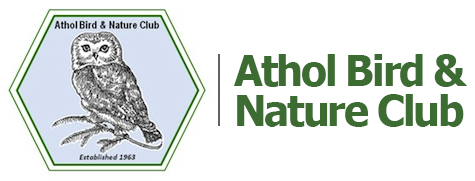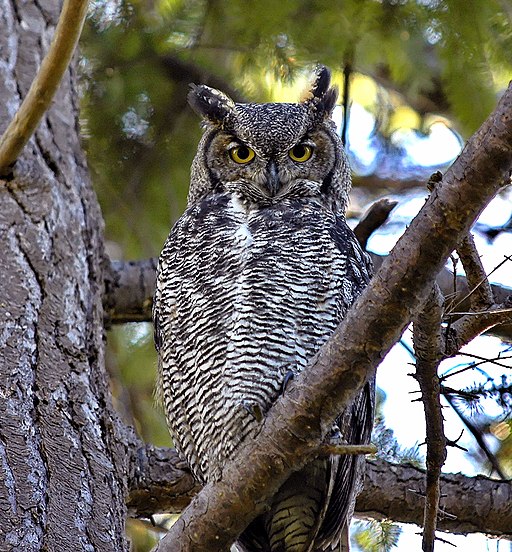Great Horned Owl
Bubo Virginianus
Written by Kathy Richards
HABITAT:
The Great Horned Owl prefers thick forest, mostly evergreens, to roost in. They will hunt in fields, deserts, open woodlands, orchards, parks, marshes (next to woodlands), swamps, canyons, creeks, rivers, and cliffs.
NESTING:
They do not build their own nest but will take over large holes in trees or abandoned red-tailed hawk nests placed in a fork in the tree. They typically nest 40-70 ft off the ground. It does nothing to enhance the nest no matter the state of disrepair. Sometimes a female will pick out a nest as early as Oct and defend it until nesting season which is late Jan early Feb. Great Horned Owls usually lay 2 eggs and incubation starts as soon as the egg is laid and lasts 28-30 days. By 14 days after hatching the young are 1/3 of their adult size.
BEHAVIOR:
The great horned owl is a skilled hunter. In winter it may cache its prey and come back later to thaw out the frozen animal by incubating it. It is a very aggressive hunter. This owl is very adaptable to different habitats so it is not endangered like some of the other owls.
The call is a deep hoot (the only one in MA that hoots) which is 3-8 hoots with an increase in tempo in the middle. Some say it sounds like it is sayin “Who’s awake? Me tooo!”
FOOD:
Great horned owls eat a variety of prey and sizes of prey. This includes rodents, rabbits, woodchuck, porcupine, opossum, mink, almost any reptile, amphibians, and insects, spiders, birds, great blue herons, as well as other owls. It is not uncommon for an injured Great Horned Owl to come to a rehabilitator smelling like skunk.
PREDATORS:
People are the main threat to the Great Horned Owl. Very aggressive birds, such as the raven and crow may drive away an owl by mobbing it. The owl drives away wood be predators like the coyote, lynx, wolf, bear, dogs and cats by digging its talons into the animals tearing at them with its beak.

